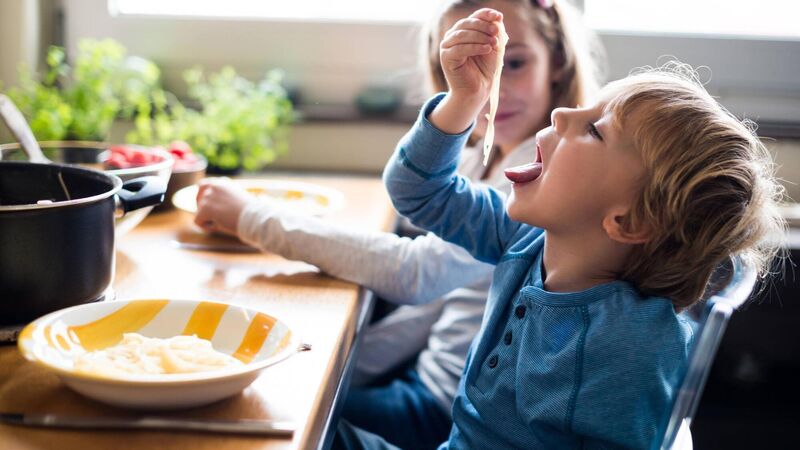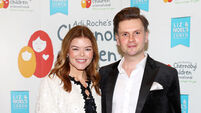Orla McAndrew: To be free is to eat unselfconsciously, without pretence

"Across from me, my children eat like small, joyful creatures. They swap plates, share forkfuls, laugh with food in their mouths. They eat with complete trust in their place at the table. It’s noisy, messy, alive."
We’re staying in Kilronan Castle for a family wedding. It was built to impress: High ceilings, long corridors, everything thick with history. The table is dressed within an inch of its life: Polished silver, white linen, glass that catches every bit of light. It’s beautiful.
I love a beautiful table. The care behind it, the quiet kindness of preparation, the way it says, ‘You’re worth the effort.’ But beauty should never choke the joy out of a meal. A table should hold us, not trap us.
Across from me, my children eat like small, joyful creatures. They swap plates, share forkfuls, laugh with food in their mouths. They eat with complete trust in their place at the table. It’s noisy, messy, alive.
Some people would see chaos. I see perfection.
The courts of Britain and France turned eating in to performance: The right cutlery, the right order of courses, the right tone of voice. It was about showing who belonged and who didn’t. It was about status, not generosity.
Here in Ireland, we inherited all that, even though it was used to keep us in our place. Hence the big houses, the banquets, the etiquette manuals. While people outside their walls starved, the landlords dined on beef and salmon and butter, on food that came from Irish soil, Irish hands. Grain and cattle were shipped out for profit while our own went hungry. The famine was not a natural disaster. It was a policy. A choice. Food was used as a weapon, and the table became its battleground.
Food has always shown who has power, manifested in who eats and who serves. And we still use food to draw lines. So we designate the ‘right’ ingredients, the ‘right’ restaurants, the ‘right’ way to behave. Fine dining, Michelin stars, and tasting menus whispered over white linen are called ‘refinement’, but they still smell of hierarchy.
Even the way we use cutlery tells a story of invention. Once, knives and forks were laid on the left of the plate. You picked up whichever made sense for what was being served, because food was shared and passed around. It wasn’t until the upper classes began hosting formal, multi-course meals that cutlery migrated rightward, matching the dominant hand of the sword-bearing elite.
Later, when Americans began cutting food with the knife in the right hand and then switching the fork to eat, Europeans called it crude. It only proves how made up it all is. The rules change depending on who writes them, and if they can change, they can be questioned.
Even in the world I work in, where we talk endlessly about ‘sustainability’ and ‘zero waste’, the same divides exist. There are people who can afford to talk about provenance, and there are people who can barely afford to feed their families. Organic, local, ethical food has become another form of status. We’ve turned good intention in to currency.
The Irish table, before empire and etiquette got their hands on it, was communal.
It was about making do, about feeding whoever turned up hungry. Food was shared, not displayed. There was laughter and noise and argument and gratitude. There were hands passing bowls and tearing bread. There were no place settings, no performance. Just the simple act of making sure everyone got enough. That’s the table I want my children to know. A table that can be both beautiful and human, where the plates don’t have to match, but the welcome is real. Where they can eat loudly, share freely, and know that joy is not bad manners.
When I see them at this castle table, laughing and tasting and passing plates between them, I feel proud. They are unbothered by the weight of expectation. They eat like they know they belong. In a place like this, that feels political.
The history of Irish food is about who got to eat and who didn’t. And when my children eat freely, without fear or formality, I see something that was nearly taken from us.
To eat with joy in the shadow of all that history feels like reclamation. To turn the table back in to what it should have been all along: A place of welcome, of noise, of life. Beauty means nothing if it keeps people small. The joy matters more.





